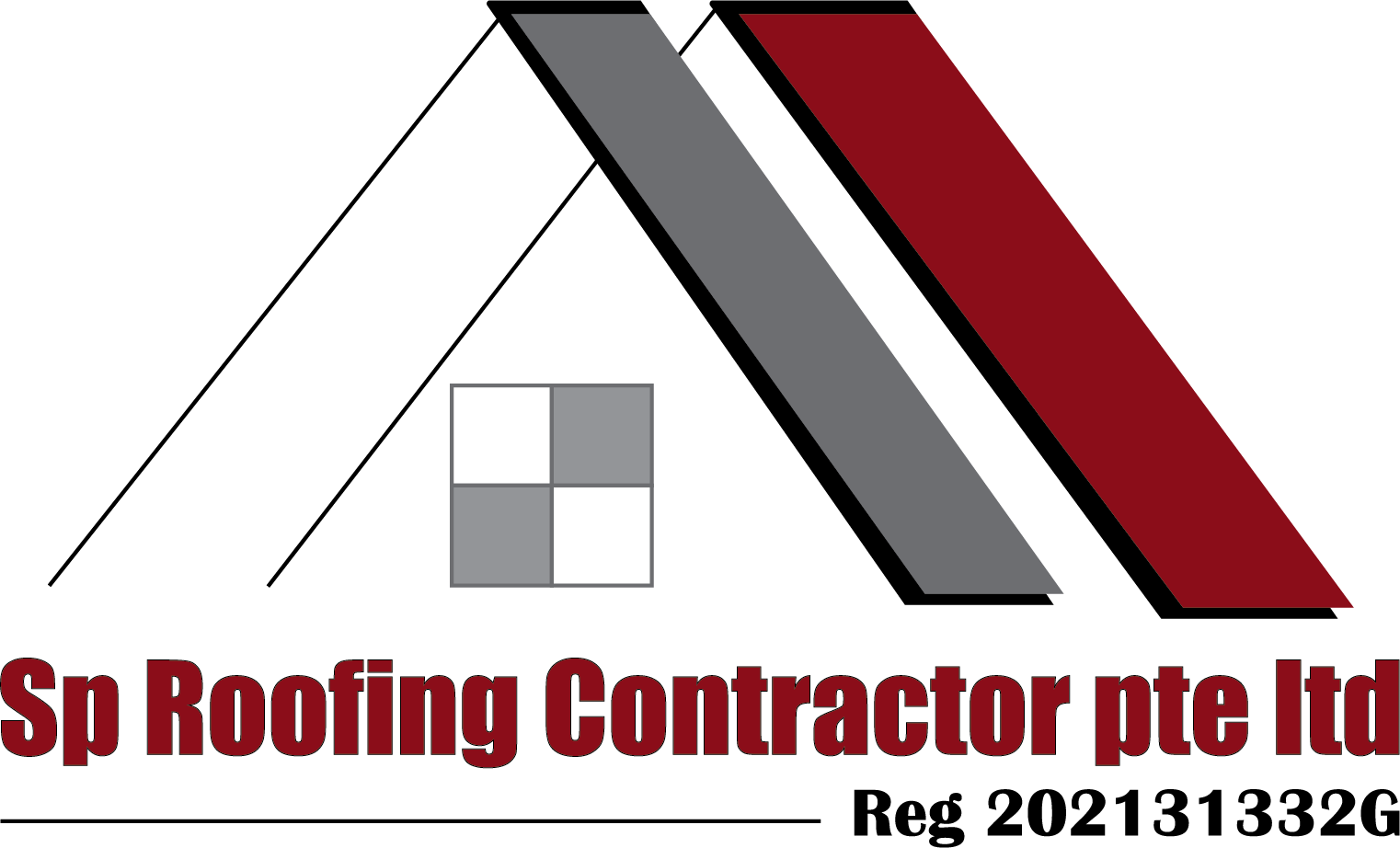“Is Your Roof Leaking? Here’s What 89% of Singaporeans Are Doing Wrong…”
That innocent water drip from your ceiling? It’s not as harmless as you think. If you’re like most Singaporeans, you’re probably treating that roof leak like it’s just another minor home hiccup. But here’s the brutal truth I’ve learned after 17+ years fixing roofs across Singapore—from luxury condos in Marina Bay to heritage shophouses in Chinatown: ignoring a roof leak is like letting a small crack in your MRT window turn into a complete shatter. It never stays small.
In this comprehensive guide, I’ll walk you through everything you need to know about roof leak repair in Singapore. Why the urgency? How to spot problems before they drain your wallet? And most importantly—how to fix them properly the first time, so you never have to deal with this headache again.
Critical Warning for Singapore Home Owners
I’m going to be straight with you. That “tiny” leak you’re postponing? It could cost you anywhere from S$150 for early intervention to over S$5,000 for extensive repairs. And with Singapore’s unpredictable weather patterns—think sudden downpours and scorching heat—time is definitely not on your side.
Why Roof Leaks Are Critical in Singapore’s Unique Climate
Singapore’s Weather: Your Roof’s Biggest Enemy
40%
Faster roof deterioration in
Singapore VS temperate countries
2,340mm
Annual rainfall –
nearly double that of London
95%
Humidity levels promoting material degradation
50mm
Rain per hour during storms
Let’s talk about Singapore’s love-hate relationship with roofs. Our tropical climate isn’t just humid—it’s relentlessly humid. Combined with sudden temperature swings and those infamous flash floods, your roof is basically fighting a war 24/7.
Here’s what most homeowners don’t realize: Singapore’s climate accelerates roof deterioration by 40% compared to temperate countries. The constant expansion and contraction from our 32°C days and cooler nights create micro-cracks that become major problems during monsoon season.
The Perfect Storm Formula:
- Intense UV exposure (Singapore gets 12 hours of daylight year-round)
- 95% humidity levels promoting material degradation
- Sudden temperature drops during storms causing rapid contraction
- Heavy rainfall (up to 50mm in an hour during storms)
Fun fact: Did you know Singapore’s annual rainfall of 2,340mm is nearly double that of London? Your roof deals with more water stress in one monsoon than most roofs handle all year.
The True Cost of Procrastination: Why “Later” Becomes “Never”
You know what I hear most often? “Aiya, small leak only lah, can wait.” But here’s the math that’ll wake you up:
Early Action
- Small leak repair $150-$400
- Time needed 2-4 hours
- Damage scope Localized
Delayed Action
- Medium repair $750-$1,500
- 2ndary damage Ceiling, walls
- Time needed 1-2 days
Procrastination Penalty
- Major repairs $1,500- $5,000+
- Mold repairs $800- $2,000
- Rewirings $1,200- $3,000
Bottom Line
That $300 repair you’re avoiding today becomes a $5,000+ nightmare tomorrow. Lost property value: 5-15% for water-damaged properties.
How to Identify Roof Leaks Early (Before They Bankrupt You)
After inspecting over 2,500 roofs across Singapore, the warning signs are usually screaming at you—you just need to know the language.
🏠 Interior Red Flags (What You See Inside)
1. Water Stains and Discoloration
-
- What to look for: Brown, yellow, or dark rings on ceilings and walls
- Singapore-specific tip: In our humid climate, these stains often appear larger than the actual leak source
- Urgency level: High—visible stains mean water has been penetrating for weeks
2. Paint and Wallpaper Issues
- Peeling paint: Especially around ceiling edges and corners
- Bubbling wallpaper: Moisture trapped behind surfaces
- Chalky residue: Mineral deposits from evaporated water.
3. The Smell Test
- Musty odors: First sign of mold development (dangerous in Singapore’s humidity)
- “Wet concrete” smell: Indicates structural water penetration
- Sweet, rotting smell: Wood decay—call immediately
4. Humidity and Temperature Changes
- Sudden humidity spikes in specific rooms
- Cold spots on walls or ceilings
- Condensation in unusual places
🏘️ Exterior Warning Signs
1. Tile and Shingle Problems
-
- Missing or cracked tiles: Singapore’s heat-cool cycles cause brittleness
- Displaced tiles: Strong winds from our frequent storms
- Granule loss: UV damage from intense tropical sun
2. Flashing and Seal Issues
- Rust stains: Metal flashing corrosion (accelerated by salt air)
- Cracked caulking: Dried out from Singapore’s heat
- Loose or missing flashing: Around chimneys, vents, satellite dishes
3. Gutter and Drainage Problems
- Overflowing gutters: Can’t handle Singapore’s intense rainfall
- Rust or corrosion: Especially in older HDB blocks
- Standing water: Pooling on flat roofs after rain
4. Structural Signs
- Sagging roof lines: Critical—call immediately
- Damaged soffits and fascia: Water infiltration points
- Stained exterior walls: Water running down from roof
💡 Hidden Clues Most People Miss💡
Ants trailing indoors following moisture sources, termites attracted to water-damaged wood
⚡ Electrical Issues
Flickering lights, tripping circuits, corroded outlets—turn off power immediately
❄️ HVAC Problems
Aircon working harder, unusual condensation, musty air from mold spores
Professional Roof Leak Detection Methods: How We Find What You Can’t
Here’s where 17 years of experience pays off. We use technology that goes way beyond visual inspection:

Thermal Imaging Detection
- How it works: Infrared cameras detect temperature differences caused by water infiltration
- Singapore advantage: Especially effective in our climate where water creates distinct cooling patterns
- Accuracy rate: 95%+ for detecting hidden leaks

Moisture Meter Analysis
- Electronic detection: Measures moisture content in materials
- Non-invasive: No damage to your property during inspection
- Precision mapping: Shows exact boundaries of water damage.

Drone Roof Surveys
- Safety first: No ladder risks for thorough roof inspection
- High-resolution imaging: Spot problems invisible from ground level
- Documentation: Detailed photo evidence for insurance claims.

Water Testing Methods
-
- Controlled water application: Systematic testing of suspected areas
- Flood testing: For flat roofs and balconies
- Spray testing: For vertical surfaces and walls
Types of Roof Leaks Common in Singapore Properties
HDB Flat Roof Leaks: Navigating Singapore’s Public Housing Challenges
Living in an HDB flat comes with unique roof leak scenarios that private property owners never face. Here’s your survival guide:
Inter-Floor Leakage: The Neighbor Nightmare
The Problem
Water from the unit above seeping through your ceiling—one of Singapore’s most common disputes.
Who's Responsible?
- Upstairs neighbor: If leak originates from their bathroom, kitchen, or balcony
- Town Council: For external building envelope issues
- You: For leaks within your own unit
Quick Action Steps
1. Document everything: Photos, videos, dates, times
2. Notify upstairs neighbor immediately (get written acknowledgment)
3. Contact Town Council if neighbor is unresponsive
4. Get professional assessment to determine exact source
Cost Expectations
- Your repair: S$200-S$800 for ceiling damage
- Upstairs repair: S$300-S$1,200 for source fixing
- Legal mediation: S$500-S$2,000 if dispute escalates
External Wall Seepage: The Aging Block Problem
Common in
Older HDB estates (Toa Payoh, Ang Mo Kio, Queenstown built before 1990)
Typical causes
- Deteriorated external waterproofing
- Cracked concrete facade
- Failed window sealing
- Defective exterior wall joints
Town Council vs. Owner Responsibility:
- Town Council covers: External building envelope repairs
- Owner responsibility: Internal damage restoration
- Gray areas: Window frame sealing, balcony waterproofing
Roof Slab Leaks: The Structural Issue
What happens
Water penetrating through the concrete roof slab itself
Warning signs
- Multiple ceiling leak points
- Persistent dampness after repairs
- Visible concrete deterioration
- Water dripping during rain
Repair approach:
- Professional assessment mandatory
- May require Town Council involvement
- Typically involves roof membrane replacement
- Cost range: S$1,500-S$5,000 for major repairs
Landed Property Roof Issues: When You’re Fully Responsible
Owning a landed property means roof problems are 100% your responsibility—and your wallet’s problem. Here’s what to expect:
Clay Tile Roof Problems: The Traditional Challenge
Why clay tiles in Singapore fail:
- Thermal shock: Rapid temperature changes cause cracking
- UV degradation: Singapore’s intense sun makes tiles brittle
- Storm damage:S High winds can displace or break tiles
- Natural settling: Building movement over time
Common repair needs:
-
- Individual tile replacement: S$30-S$80 per tile
- Ridge tile resealing: S$500-S$1,200 per section
- Underfelt replacement: S$8-S$15 per sqm
- Complete re-roofing: S$25-S$45 per sqm
Maintenance tips:
-
- Annual inspection: Check for cracked or loose tiles
- Post-storm checks: Look for displaced tiles after severe weather
- Gutter cleaning: Prevent water backup that can lift tiles
- Tree maintenance: Keep branches away from roof surface
Metal Roof Challenges: The Rust Battle
Singapore’s enemy #1 for metal roofs: Humidity + salt air = accelerated corrosion
Types of metal roof problems:
- Surface rust: Early stage, treatable with coating
- Perforation rust: Holes requiring panel replacement
- Fastener failure: Screws and bolts corroding
- Expansion joint problems: Heat causing metal movement
Repair strategies:
- Rust treatment: Wire brush + rust converter + protective coating
- Panel replacement: S$25-S$40 per sqm
- Fastener replacement: S$5-S$12 per fastener
- Preventive coating: S$8-S$18 per sqm every 3-5 years
Material upgrades:
- Colorbond steel: Better corrosion resistance
- Aluminum roofing: No rust, lightweight
- Stainless steel: Premium option for coastal areas
Shophouse Roof Complexities: Heritage Meets Reality
Unique challenges of Singapore shophouses:
- Conservation requirements: URA restrictions on modifications
- Mixed materials: Combination of clay tiles, timber, and metal
- Age-related deterioration: Many over 80+ years old
Common shophouse roof issues:
- Timber rot: Singapore’s humidity attacks wooden structures
- Heritage tile matching: Finding period-appropriate replacements
- Structural settlement: Foundation movement affecting roof alignment
- Party wall leaks: Shared wall waterproofing failures
Repair considerations:
- Heritage compliance: May require conservation architect input
- Higher costs: Specialized materials and techniques
- Extended timeline: Approval processes can take weeks
- Skilled craftsmen: Not all contractors handle heritage work
Condominium and Commercial Building Leaks: The High-Rise Challenge
Flat Roof Membrane Failures: The RC Slab Problem
Why flat roofs leak in Singapore:
- Membrane deterioration: UV damage, thermal cycling, building movement
- Ponding water: Poor drainage causing membrane breakdown
- Penetration failures: Pipes, drains, and equipment mounting points
- Construction defects: Poor initial installation
Common membrane types and lifespans:
- Modified bitumen: 8-12 years in Singapore climate
- EPDM rubber: 10-15 years with proper maintenance
- TPO: 12-18 years, newer technology
- Liquid applied: 10-20 years, depends on quality
Repair vs. replacement decision factors:
- Age of membrane: >70% of lifespan = replace
- Number of repairs: >3 major repairs = replace
- Extent of damage: >30% affected area = replace
- Future maintenance: Cost of ongoing repairs vs. new system
Condo Balcony Waterproofing: The Overlooked Problem
Why balcony leaks are so common:
- Design flaws: Inadequate falls, poor drainage
- Material selection: Wrong products for exposed conditions
- Installation errors: Inadequate surface preparation
- Maintenance neglect: Blocked drains, damaged sealants
Typical balcony leak scenarios:
- Floor slab penetration: Water reaching ceiling below
- Wall junction failures: Water entering through cracks
- Drain blockages: Overflow causing water penetration
- Planter box leaks: Garden areas causing chronic moisture
Repair approaches:
- Surface repairs: S$200-S$800 per balcony
- Membrane replacement: S$500-S$1,500 per balcony
- Structural repairs: S$1,000-S$3,000+ if concrete damage
- Drainage improvements: S$300-S$800 for better water management
MCST vs. Owner Responsibilities: Know Your Obligations
Management Corporation (MCST) typically covers:
- Building envelope: External walls, main roof structure
- Common area leaks: Affecting multiple units
- Major building systems: Structural waterproofing
Individual owner responsibility:
- Unit interior damage: Ceiling, wall repairs from leaks
- Balcony waterproofing: Private enclosed spaces
- Window and door sealing: Unit-specific installations
Gray areas requiring legal clarification:
- Balcony vs. common area: Check strata plan boundaries
- Window frame leaks: Installation vs. maintenance issues
- Inter-unit leaks: Who pays for neighboring unit damage
Step-by-Step Professional Roof Leak Repair Process
Emergency repairs to complete waterproofing – your comprehensive guide to getting it done right the first time
Emergency Repairs: Your First-Aid Kit for Roof Disasters
When that leak can’t wait for business hours, here’s your survival protocol
Safety First: When NOT to DIY
- Water near electrical outlets or panels
- Sagging ceiling materials
- Active electrical sparking or burning smells
- Structural damage or roof collapse risk
- Multiple leak points (indicates major failure)
- Lightning risk: Never work on roofs during storms
- Heat exhaustion: Avoid midday work (11am-3pm)
- Slip hazards: Morning dew makes surfaces treacherous
- Equipment failure: Humidity affects electrical tool.
Emergency Damage Control Measures

Immediate Water Management
- Move valuables: Electronics, documents, furniture away from leak
- Container placement: Large buckets or tarps to catch water
- Pathway protection: Plastic sheeting to protect flooring
- Secondary containment: Towels around containers to prevent overflow

Temporary Leak Stopping
- Roofing cement: Quick seal for small cracks
- Roof tape: Waterproof adhesive for emergency patches
- Plastic sheeting: Tarp weighted down for larger areas
- Expandable foam: For gaps and holes (temporary only)

Interior Protection
- Ventilation: Fans to prevent mold growth
- Dehumidification: Remove excess moisture from air
- Documentation: Photos for insurance claims
- Professional contact: Schedule permanent repair ASAP.
⚠️ What NOT to do during emergencies:
- Don’t use permanent sealants on wet surfaces
- Don’t ignore electrical safety for any reason
- Don’t delay professional help hoping it’ll stop
- Don’t use inappropriate materials (duct tape, etc.)
Professional Roof Leak Repair Methods: The SP Roofing Approach
17 years of expertise delivering permanent solutions across Singapore

Comprehensive Inspection and Diagnosis
Our 17-point inspection process:
🏠 Exterior Assessment
Roof surface evaluation, visual inspection from multiple angles, drone survey for inaccessible areas.
🔧 Penetration Examination
Vent, chimney, equipment mounting checks, flashing and sealant condition, pipe entry points.
🔍 Interior Moisture Mapping
Thermal imaging scan, electronic moisture detection, structural damage evaluation.
📋 Documentation
Detailed photo documentation, written assessment with prioritized repairs, cost estimation with options.
💧 Drainage Analysis
System analysis, gutter inspection, roof slope assessment, drain blockage identification.
⚡ Technology Integration
FLIR thermal cameras, Tramex moisture meters, DJI drone systems, pressure testing.

Repair Execution by Roof Type
🏛️ Clay Tile Roof Repairs
Step-by-step process:

Safety Setup
Scaffolding or safety harness systems

Tile Removal
Carefully lifting surrounding tiles

Substrate Inspection
Check timber or concrete beneath

Waterproofing
Membrane or felt replacement if needed

Tile Replacement
New tiles matching existing profile

Ridge and Pointing
Mortar work for weatherproofing

Final Inspection
Water testing to confirm seal
Materials and Costs
Standard clay tiles
Heritage tiles
Underfelt membrane
Pointing mortar
Don't Let Small Problems Become Big Disasters
That S$300 repair you’re postponing today could easily become a S$5,000+ disaster tomorrow. In Singapore’s challenging climate, your roof needs proactive care, not reactive damage control.
Frequently Asked Questions
Q: How long do roof repairs take in Singapore?
A: Most repairs take 1-3 days, depending on the extent of damage. Simple tile replacements can be completed in 2-4 hours, while major structural repairs may require a full week.
Q: Can I claim roof leak repairs through HDB?
External leaks affecting the building envelope are usually covered by Town Council. Internal leaks (inter-floor) require cooperation from neighbors and may involve shared costs.
Q: When should I schedule roof repairs?
If possible, schedule repairs during Singapore’s drier months (February-September). However, emergency repairs shouldn’t wait—water damage worsens rapidly in our climate.
Q: How can I tell if my roof repair warranty is legitimate?
A: Always get a written warranty that clearly details what’s covered, duration, and exclusions. Reputable contractors provide comprehensive warranties backed by insurance.


0 Comments